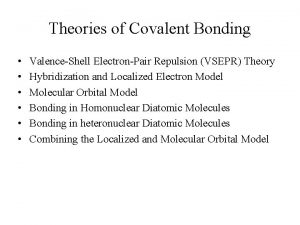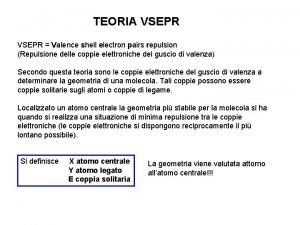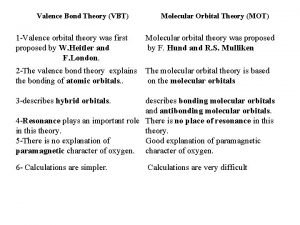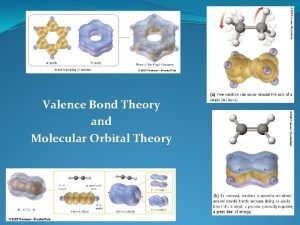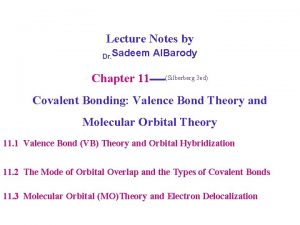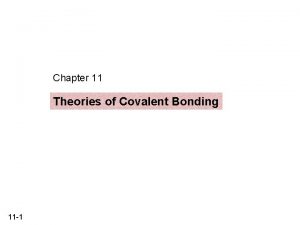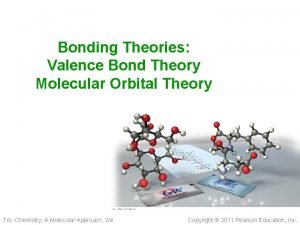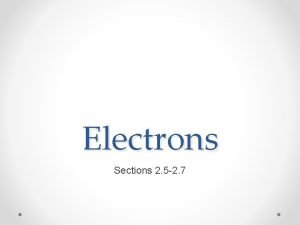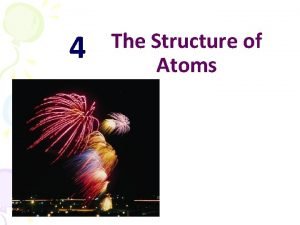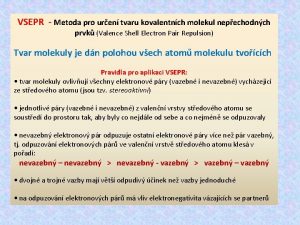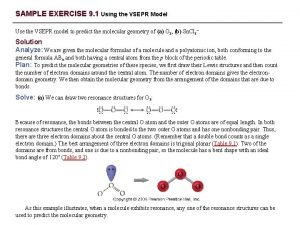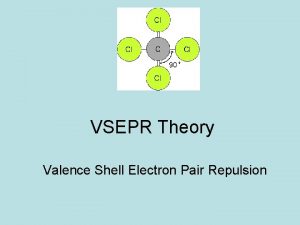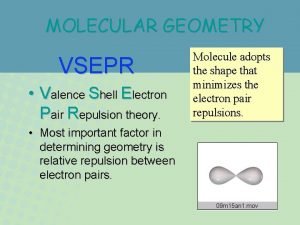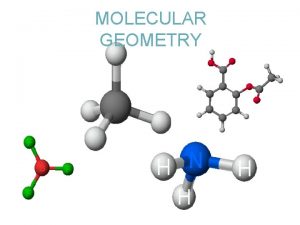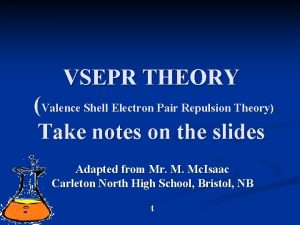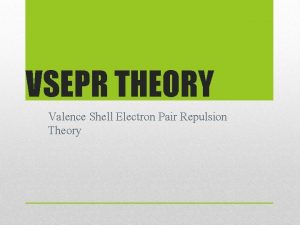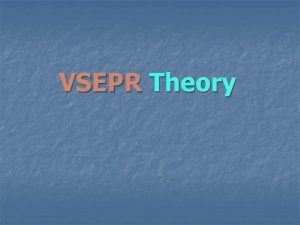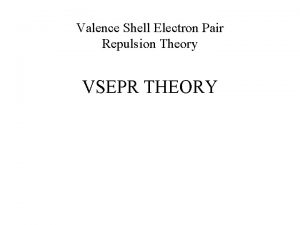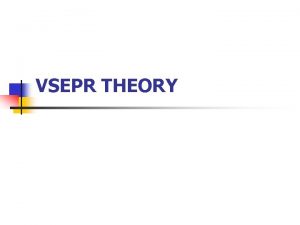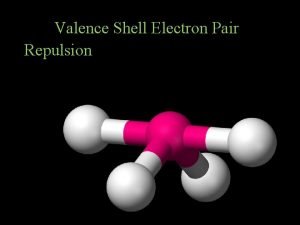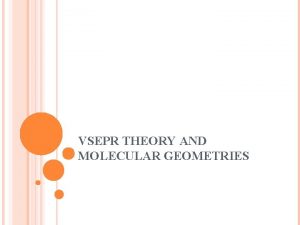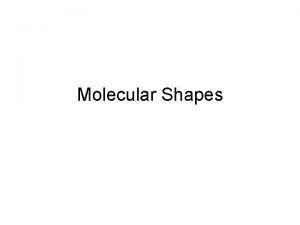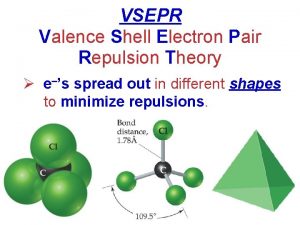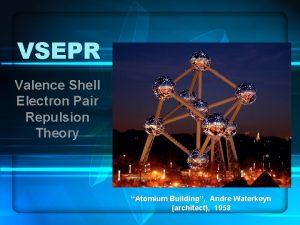Molecular Geometry VSEPR Theory Valence shell electronpair repulsion


















- Slides: 18

Molecular Geometry • VSEPR Theory- “Valence- shell, electron-pair repulsion” • states that repulsion between the sets of valence-level electrons surrounding an atom cause these sets to be oriented as far apart as possible.

Determining VSEPR • 1. 2. 3. 4. 5. Determine the VSEPR for H 2 O Draw the Lewis Dot Draw the Structural Formula Label the central atom as A Label any atoms attached to the center atom as B Label any paired electrons on the central atom that are not used in the bond as E H-O-H B E 2 A B VSEPR AB 2 E 2 Shape Bent (look on chart)

molecule. Copyright© by Houghton Mifflin 3

their negative ends. Copyright© by Houghton Mifflin 4

structure of methane. Copyright© by Houghton Mifflin 5

VSEPR Chart VSEPR AB or AB 2 E AB 3 AB 4 AB 3 E AB 2 E 2 AB 5 AB 6 SHAPE Linear Bent Trigonal-Planar Tetrahedral Trigonal-Pyramidal Bent Trigonal-Bipyramidal Octahedral

C. Common Molecular Shapes 2 total 2 bond 0 lone Be. H 2 LINEAR 180°

C. Common Molecular Shapes 3 total 3 bond 0 lone BF 3 TRIGONAL PLANAR 120°

C. Common Molecular Shapes 3 total 2 bond 1 lone SO 2 BENT <120°

C. Common Molecular Shapes 4 total 4 bond 0 lone CH 4 TETRAHEDRAL 109. 5°

C. Common Molecular Shapes 4 total 3 bond 1 lone NH 3 TRIGONAL PYRAMIDAL 107°

C. Common Molecular Shapes 4 total 2 bond 2 lone H 2 O BENT 104. 5°

C. Common Molecular Shapes 5 total 5 bond 0 lone PCl 5 TRIGONAL BIPYRAMIDAL 120°/90°

C. Common Molecular Shapes 6 total 6 bond 0 lone SF 6 OCTAHEDRAL 90°

• PF 3 D. Examples 4 total 3 bond 1 lone F P F F TRIGONAL PYRAMIDAL 107°

• CO 2 D. Examples 2 total 2 bond 0 lone O C O LINEAR 180°

Table 12. 4 Copyright© by Houghton Mifflin 17

• Hybridization-The Blending of Orbitals. • Dipole- is created by equal but opposite charges that are separated by a short distance. • Dipole-Dipole Attractions-Attraction between Attractions oppositely charged regions of neighboring molecules. • Hydrogen Bonding- Bonding between hydrogen and more electronegative neighboring atoms such as oxygen and nitrogen. Hydrogen bonding in Kevlar, a strong polymer used in bullet-proof vests. • London Dispersion Forces- The temporary separations of charge that lead to the London force attractions are what attract one nonpolar molecule to its neighbors. London forces increase with the size of the molecules.
 Sof4 lewis structure
Sof4 lewis structure Shell cleanliness shell soundness shell
Shell cleanliness shell soundness shell Shell cleanliness shell soundness shell
Shell cleanliness shell soundness shell Valence shell electron pair repulsion
Valence shell electron pair repulsion Valence shell electron pair repulsion
Valence shell electron pair repulsion Vbt vs mot
Vbt vs mot Molecular orbital theory and valence bond theory
Molecular orbital theory and valence bond theory Valence bond theory and molecular orbital theory
Valence bond theory and molecular orbital theory 11:55
11:55 Atomic orbitals of oxygen
Atomic orbitals of oxygen Vsepr theory molecular shapes
Vsepr theory molecular shapes Pf3 molecular geometry
Pf3 molecular geometry Electron domain geometry vs molecular geometry
Electron domain geometry vs molecular geometry Molecular geometry and bonding theories
Molecular geometry and bonding theories 1s 22 s22 p63 s23 p64 s2 3d 10
1s 22 s22 p63 s23 p64 s2 3d 10 Full valence shell period 3
Full valence shell period 3 Silicon valence electrons
Silicon valence electrons Valence shell
Valence shell Sn lewis structure
Sn lewis structure
